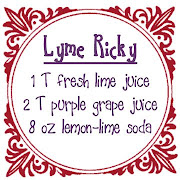
This is the first step to building your square foot garden. I should clarify at the very beginning here that neither my husband nor I have any carpenter's training. This is all from personal experience. Right or wrong, this is how we did it. :)
Our garden space is slightly unusual, but it's what we need for our yard. We'll be making a box that is 14 feet long and two feet deep. It will sit along the fence at the side of our house.
Because of where we live and the animals of our surrounding forest, we'll be building a fence around the garden. The instructions for the fencing and building the fence will be posted later. These are only the supplies needed to build the shell of the box. Here it goes!!!
Box Total: $25.60Supplies Needed:
- Boards -- 5 wood boards measuring 2 inches X 6 inches X 8 feet. As you are selecting your boards, be very careful to watch for warping. We had to go back and get another because we forgot to check them at the hardware store.
- Wood screws -- one package of 3 inch screws
Tools Required:
Step #1 -- Purchase supplies and have wood cut. While still at the hardware store, have them cut the wood for you. It's so much easier than doing it at home. You will need your five boards cut as follows:
- Board #1 -- Cut two feet off the end, leaving one piece six feet and the other two feet long -- this is one side of the six foot box and one end piece
- Board #2 -- Cut two feet off the end, leaving one piece six feet and the other two feet long -- this is the second side of the six foot box and the other end piece
- Board #3 -- Cut two feet off, then another two feet off and leave the four foot piece remaining. The two foot sections will be the end of the larger box
- Boards #4 and #5 should be left alone, you need them to be 8 feet long.
Step #2 -- Place your boards out as you intend the box to look. It will help you to see any mistakes in placement or warped boards. It is important that the two foot piece is placed on the inside of the larger pieces. If you don't you will not leave enough room for "square feet" in your garden. It will be too narrow.
You will be making two separate boxes if you follow these plans exactly --
- 28 inches by 8 feet (you get 28 inches by the 24 inch board plus two for each side board)
- 28 inches by 6 feet

Step #3 -- Pre-drill holes for the screws. You will be putting two screws at each joint, so you will need to pre-drill two holes starting on the outside piece of wood first. Be sure to drill all the way into the second board. It will help to pull the pieces together tighter when you place the screws.
If you plan on putting fencing around your garden, be sure to leave space for the screws that will hold the fence post up at each corner. You will want to put one post screw at the top and one near the bottom.
As for drilling the holes, over time, we learned that drilling the two holes for one corner, then putting in the screws at that same location was actually faster than pre-drilling all of the holes all at once.
Step #4 -- Put two screws at each joint. Place your screws into the drilled holes and either use the drill or screwdriver to attach the two boards together. Make sure that the two boards pull together to form a tight joint.
Optional Step #5 -- Attach the two separate boxes together. We placed three screws on the middle boards to hold the boxes together. We will be surrounding the two boxes with a common fence, so we didn't want them to separate later.
Yahoo! Your boxes are complete! Tune in later for making the fence, the dirt and actually planting the garden.









 We picked about 8 pounds of tomatoes today, bringing our grand total to 37 pounds. Not bad considering the blight plague. We're hoping to get more, but it's going to be an effort to beat the blight now. I'm afraid it's going to take over.
We picked about 8 pounds of tomatoes today, bringing our grand total to 37 pounds. Not bad considering the blight plague. We're hoping to get more, but it's going to be an effort to beat the blight now. I'm afraid it's going to take over.







 This is the first step to building your square foot garden. I should clarify at the very beginning here that neither my husband nor I have any carpenter's training. This is all from personal experience. Right or wrong, this is how we did it. :)
This is the first step to building your square foot garden. I should clarify at the very beginning here that neither my husband nor I have any carpenter's training. This is all from personal experience. Right or wrong, this is how we did it. :)
